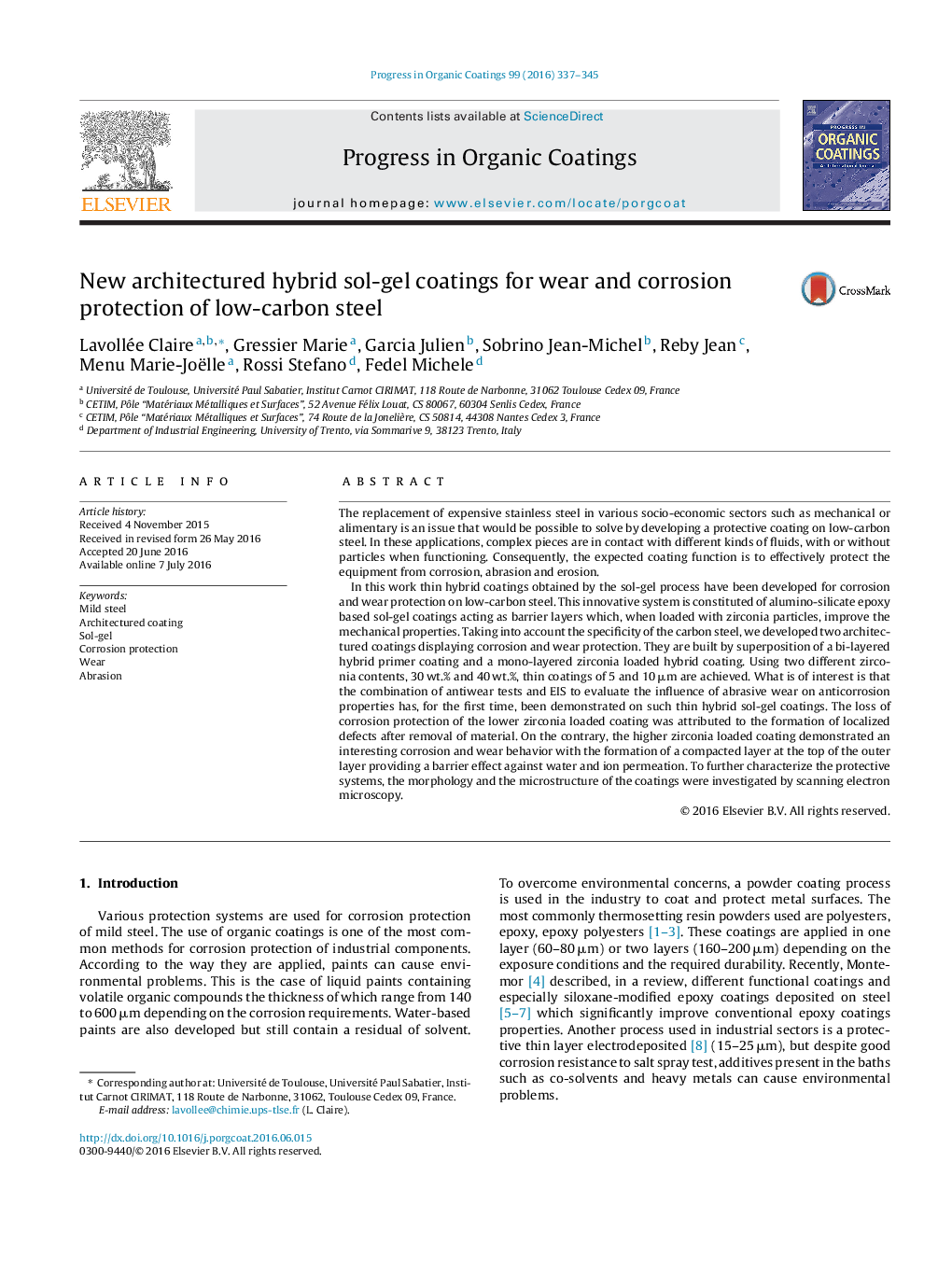| Article ID | Journal | Published Year | Pages | File Type |
|---|---|---|---|---|
| 692069 | Progress in Organic Coatings | 2016 | 9 Pages |
•Innovative architectured sol-gel coatings to protect mild steel have been elaborated.•The gradient of concentration of the coatings is adapted to the aimed properties.•Such thin coatings have been characterized by combining Taber test and EIS methods.•This kind of architecture demonstrated promising corrosion and wear behaviors.
The replacement of expensive stainless steel in various socio-economic sectors such as mechanical or alimentary is an issue that would be possible to solve by developing a protective coating on low-carbon steel. In these applications, complex pieces are in contact with different kinds of fluids, with or without particles when functioning. Consequently, the expected coating function is to effectively protect the equipment from corrosion, abrasion and erosion.In this work thin hybrid coatings obtained by the sol-gel process have been developed for corrosion and wear protection on low-carbon steel. This innovative system is constituted of alumino-silicate epoxy based sol-gel coatings acting as barrier layers which, when loaded with zirconia particles, improve the mechanical properties. Taking into account the specificity of the carbon steel, we developed two architectured coatings displaying corrosion and wear protection. They are built by superposition of a bi-layered hybrid primer coating and a mono-layered zirconia loaded hybrid coating. Using two different zirconia contents, 30 wt.% and 40 wt.%, thin coatings of 5 and 10 μm are achieved. What is of interest is that the combination of antiwear tests and EIS to evaluate the influence of abrasive wear on anticorrosion properties has, for the first time, been demonstrated on such thin hybrid sol-gel coatings. The loss of corrosion protection of the lower zirconia loaded coating was attributed to the formation of localized defects after removal of material. On the contrary, the higher zirconia loaded coating demonstrated an interesting corrosion and wear behavior with the formation of a compacted layer at the top of the outer layer providing a barrier effect against water and ion permeation. To further characterize the protective systems, the morphology and the microstructure of the coatings were investigated by scanning electron microscopy.
Graphical abstractFigure optionsDownload full-size imageDownload as PowerPoint slide
